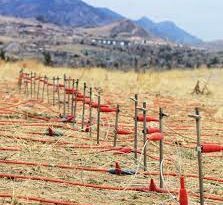Impacts of Mining Projects on Wildlife
Wildlife is a broad term that refers to all plants and any animals (or other organisms) that are not domesticated. Mining affects the environment and associated biota through the removal of vegetation and topsoil, the displacement of fauna, the release of pollutants, and the generation of noise.
Wildlife species live in communities that depend on each other. Survival of these species can depend on soil conditions, local climate, altitude, and other features of the local habitat.
Mining causes direct and indirect damage to wildlife. The impacts stem primarily from disturbing, removing, and redistributing the land surface. Some impacts are short- term and confined to the mine site; others may have far-reaching, long- term effects.
The most direct effect on wildlife is destruction or displacement of species in areas of excavation and piling of mine wastes. Mobile wildlife species, like game animals, birds, and predators, leave these areas.
More sedentary animals, like invertebrates, many reptiles, burrowing rodents, and small mammals, may be more severely affected. If streams, lakes, ponds, or marshes are filled or drained, fish, aquatic invertebrates, and amphibians are severely impacted.

Food supplies for predators are reduced by the disappearance of these land and water species. Many wildlife species are highly dependent on vegetation growing in natural drainages.
Read Also : Methods of Disposal of Waste Pesticide Containers
This vegetation provides essential food, nesting sites, and cover for escape from predators. Any activity that destroys vegetation near ponds, reservoirs, marshes, and wetlands reduces the quality and quantity of habitat essential for waterfowl, shore birds, and many terrestrial species.
The habitat requirements of many animal species do not permit them to adjust to changes created by land disturbance. These changes reduce living space. The degree to which animals tolerate human competition for space varies. Some species tolerate very little disturbance.
In instances where a particularly critical habitat is restricted, such as a lake, pond, or primary breeding area, a species could be eliminated. Surface mining can degrade aquatic habitats with impacts felt many miles from a mining site. For example, sediment contamination of rivers and streams is common with surface mining.



